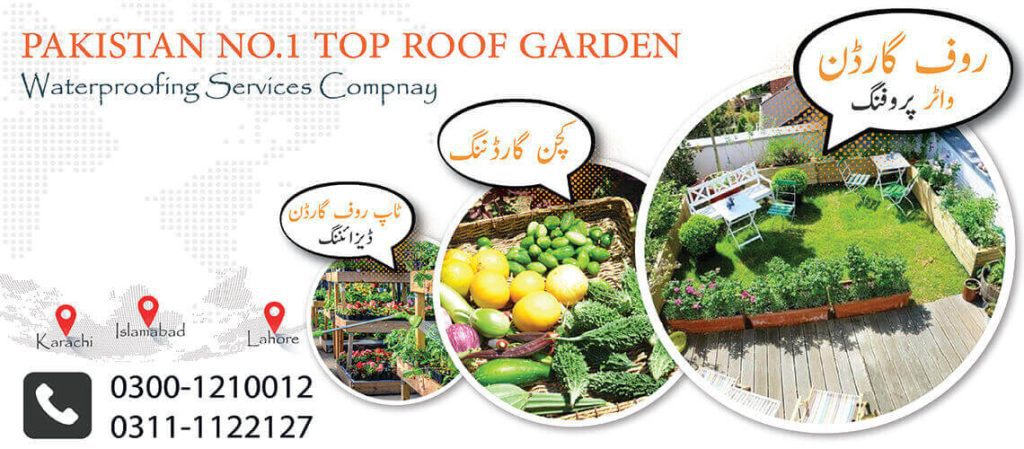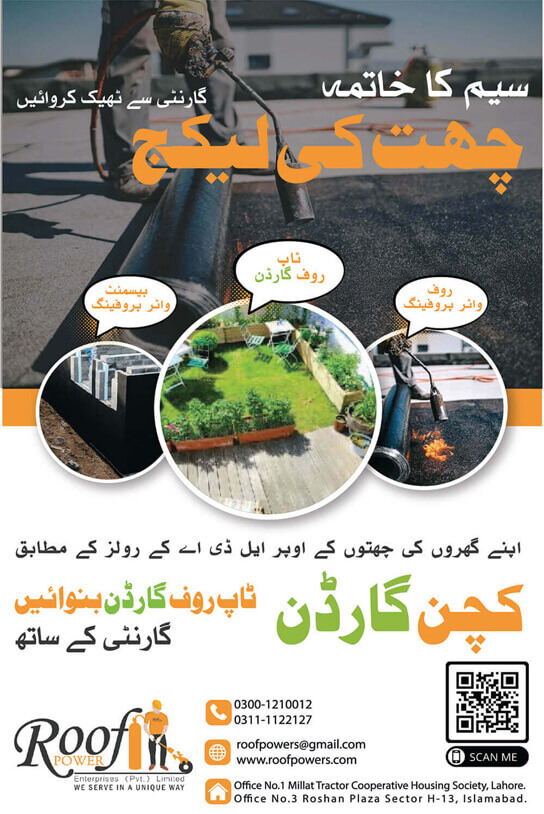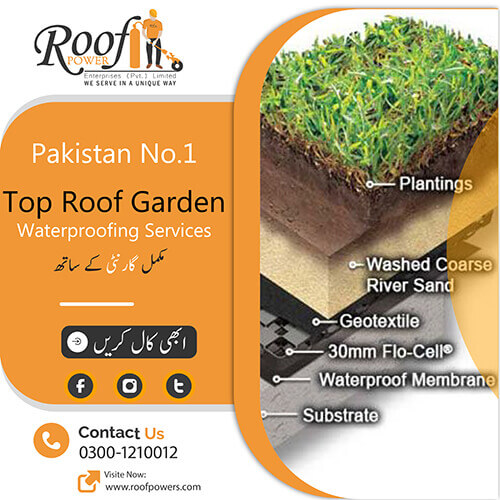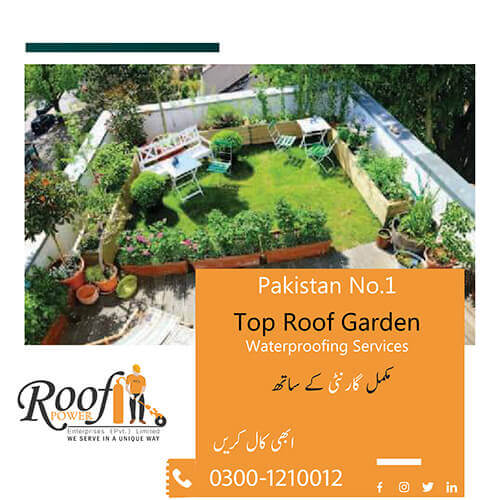
Rooftop Garden in Pakistan: Green Oasis Tips | Rooftop Kitchen Garden in Karachi | Green Roof
Did you know that urban farming and sustainable agriculture through rooftop gardening has gained popularity in Pakistan? With the increasing urbanization, more and more people are turning to rooftop gardening to create green spaces in their own homes. It’s a movement that not only embraces sustainable living but also brings numerous benefits to individuals and communities. In this article, we will explore the different types of rooftop gardening and provide tips for successful Rooftop Garden in Pakistan.
Key Takeaways:
- Rooftop gardening is gaining popularity in urban areas of Pakistan.
- It offers a sustainable solution for creating green spaces in the midst of urban landscapes.
- Rooftop gardens provide numerous benefits including improved access to fresh produce and environmental sustainability.
- There are different types of rooftop gardening techniques that can be practiced in Pakistan.
- Proper planning, design considerations, and maintenance practices are essential for successful rooftop gardening.
Benefits of Rooftop Terrace Gardening

Rooftop gardening offers a range of benefits including improved access to fresh produce, environmental sustainability, community building, and stress reduction.
With the growing interest in organic rooftop gardening, individuals and communities in Pakistan are reaping the rewards of this sustainable practice. By utilizing rooftops as green spaces, urban dwellers can enjoy a multitude of benefits that go beyond just growing plants.
Improved Access to Fresh Produce: One of the major advantages of rooftop gardening is having direct access to a variety of fresh fruits, vegetables, and herbs. By growing your own produce, you can ensure that it is free from harmful pesticides and chemicals, promoting a healthier lifestyle for you and your family.
Environmental Sustainability: Roof gardens contribute to urban greening and the preservation of the environment. By converting unused rooftop spaces into green havens, they help combat air pollution, improve air quality, and reduce the urban heat island effect. These gardens also act as natural insulators, reducing energy consumption and lowering carbon footprints.
Community Building: Rooftop gardens bring people together and foster a sense of community. They provide a space where gardeners can share tips, knowledge, and experiences. Community rooftop gardens create a sense of belonging and strengthen social connections, promoting a more united and supportive neighborhood.
Stress Reduction: Gardening has long been recognized as a therapeutic activity, helping people alleviate stress and anxiety. Rooftop gardens offer a peaceful respite from the hustle and bustle of city life, allowing individuals to reconnect with nature and find solace in nurturing plants. The sights, smells, and sounds of a rooftop garden provide a calming oasis amidst the urban chaos.
Quote:
“Rooftop gardening not only allows us to grow our own food but also strengthens our communities and nurtures our well-being. It’s a win-win solution for both individuals and the environment.”
By embracing organic rooftop gardening, Pakistani urban dwellers can reap the numerous rewards of this sustainable practice. From enjoying fresh produce to establishing vibrant communities and promoting environmental well-being, rooftop gardens have the power to transform the urban landscape into a greener and healthier oasis.
Types of Rooftop Gardening

There are various types of rooftop gardening techniques that can be practiced in Pakistan. Each method offers unique advantages and can be tailored to suit different spaces and gardening preferences. Let’s explore some popular types of rooftop gardening:
1. Container Gardening
Container gardening involves growing plants in pots or containers on rooftops. It is an excellent choice for small or limited spaces, as it allows for flexibility and easy maintenance. You can grow a variety of plants, including herbs, vegetable garden, and flowers, in containers. This type of gardening is beginner-friendly and requires basic gardening skills.
2. Green Roofs
Green roofs involve covering the entire rooftop with plants and growing medium. This method transforms your rooftop into a lush garden, providing numerous benefits such as insulation, reduction of heat island effect, and improved air quality. Green roofs require careful planning and installation to ensure proper waterproofing and structural support.
3. Vertical Gardening
Vertical gardening utilizes vertical surfaces to grow plants vertically, making the most efficient use of space. It is an ideal option for rooftops with limited horizontal space. You can create vertical gardens using trellises, hanging pots, or modular vertical systems. This method not only adds aesthetic appeal to your rooftop garden but also helps maximize plant density.
4. Community Gardens
Community gardens are shared green spaces where individuals or groups come together to cultivate plants collaboratively. They foster a sense of community, encourage social interactions, and promote knowledge sharing among gardeners. Community gardens on rooftops can unite neighbors and promote eco-friendly gardening practices.
5. Indoor Gardening
Indoor gardening involves cultivating plants indoors, allowing urban dwellers to garden year-round. With limited outdoor space, rooftop gardeners may opt for indoor gardening to expand their plant selection. By utilizing windowsills, shelves, or vertical systems, you can create an indoor garden filled with herbs, succulents, or even small fruit trees.
Each type of rooftop gardening has its own unique characteristics and benefits. You can choose the method that best suits your available space, gardening goals, and personal preferences. Let your rooftop garden become a vibrant and eco-friendly oasis amidst the urban landscape of Pakistan!
Maximizing Green Spaces in City Living

Creating green spaces in urban environments is crucial for a sustainable and enjoyable lifestyle. In Pakistan, where the landscape of cities is dominated by concrete structures, maximizing available spaces for gardening can bring immense benefits to individuals and communities. By utilizing balconies, windowsills, and rooftops, urban dwellers can transform these areas into productive green spaces.
One of the most effective ways to maximize greenery in cities is by converting rooftops into gardens. Rooftop gardens not only provide a beautiful landscape but also offer numerous advantages such as improved air quality, reduced heat island effect, and increased biodiversity. There are various techniques that can be used to create rooftop gardens, including the installation of raised beds, planter boxes, or even green roofs.
Vertical gardening is another innovative approach to maximize green spaces in city living. By growing plants vertically, such as on trellises or vertical planters, urban gardeners can utilize vertical surfaces that would otherwise remain unused. This technique is particularly beneficial for those with limited space, allowing them to grow a variety of plants and create a visually appealing vertical garden.
Creating communal green areas, such as community gardens and shared green spaces, is an excellent way to foster a sense of community and social connection among urban dwellers. These spaces not only provide an opportunity for individuals to come together and engage in urban gardening but also promote environmental awareness and sustainable practices.
Benefits of Maximizing Green Spaces in Cities:
- Promotes environmental sustainability by increasing greenery and reducing the heat island effect
- Improves air quality and reduces pollution
- Enhances the aesthetic appeal of urban landscapes
- Provides access to fresh produce and promotes healthy eating
- Fosters a sense of community and social connection among urban dwellers
By maximizing green spaces in city living, individuals can create a harmonious blend of urban lifestyle and natural beauty. Embracing urban gardening not only improves the quality of life but also contributes to a sustainable and resilient future for Pakistan.
Aesthetics and Design Considerations for Rooftop Gardens

When designing a rooftop garden, aesthetics and design considerations play a crucial role. The goal is to create a visually appealing space that harmonizes with the surrounding environment, providing a green oasis in the midst of the concrete jungle.
One effective way to optimize space while creating an attractive layout is by incorporating raised beds and planters. These elevated platforms not only add dimension and depth to the garden but also make it easier to care for the plants. They provide better drainage, prevent soil erosion, and allow for precise control over the growing conditions.
“A rooftop garden should not only be functional but also visually captivating,” says Samira Ali, a renowned landscape designer. “By using raised beds and planters, you can create a charming arrangement that showcases the beauty of the plants while maximizing the available space.”
Choosing lightweight materials for the construction of raised beds and planters is essential to minimize the load on the rooftop structure. Opt for materials such as lightweight plastic or synthetic composites that offer durability while keeping the overall weight manageable. This ensures that the rooftop can support the garden without compromising its structural integrity.
Incorporating elements such as trellises, water features, and seating areas adds an extra layer of aesthetic appeal to the rooftop garden. Trellises not only provide support for climbing plants but also create a visually striking vertical element. Water features, such as fountains or miniature ponds, add a sense of tranquility and bring a soothing ambiance to the garden. Seating areas, strategically placed among the greenery, provide a cozy and inviting space for relaxation and contemplation.
“A rooftop garden is an opportunity to blend nature and architecture seamlessly,” recommends Ali. “By considering the existing surroundings and incorporating these design elements, you can enhance the overall aesthetic appeal of the rooftop garden.”
Choosing the Right Plants, Colors, and Textures
Selecting plants that thrive in rooftop conditions is crucial for a successful and visually pleasing garden. Choose species that are well-suited to the local climate, have shallow root systems, and are drought-tolerant. Colorful flowers and foliage can add vibrancy and visual interest to the garden, while incorporating different textures, such as smooth or rough leaves, creates a layered and dynamic composition.
“The key to achieving aesthetics in a rooftop garden lies in selecting plants that not only thrive in the environment but also complement each other,” advises Ali. “By combining plants with contrasting colors, textures, and growth habits, you can create a visually stunning arrangement that captivates the senses.”
Example Plant Palette for a Rooftop Kitchen Garden
| Plant | Color | Texture |
| Cherry Tomatoes | Red | Silky Smooth Leaves |
| Basil | Green | Velvety Leaves |
| Marigolds | Yellow and Orange | Soft and Feathery |
| Purple Sage | Purple | Textured Foliage |
By carefully selecting plants that provide visual interest and thrive in rooftop conditions, you can create a rooftop kitchen garden that not only fulfills your culinary needs but also serves as a stunning visual centerpiece.
“A rooftop garden should be a place that stimulates the senses and brings joy. It should be an aesthetically pleasing sanctuary where nature and design harmoniously coexist,” concludes Ali.
Essential Elements for Successful Rooftop Gardening
When it comes to successful rooftop gardening, there are several essential elements that must be taken into consideration. These elements include proper water drainage, the use of a high-quality potting mix, selecting the right plants, and managing pests and fertilizers.
Proper Water Drainage
One of the most critical factors in rooftop gardening is ensuring proper water drainage. Without adequate drainage, water can accumulate and cause damage to the rooftop structure. Implementing effective drainage systems, such as installing drainage pipes or using raised beds with drainage holes, is key to maintaining a healthy rooftop garden.
Using a High-Quality Potting Mix
The use of a high-quality potting mix is essential for the healthy growth of plants in a rooftop garden. A good potting mix provides the necessary nutrients and drainage capabilities to support optimal plant growth. It is recommended to use a lightweight potting mix that contains a blend of organic matter, perlite, vermiculite, and compost.
Selecting the Right Plants
Choosing the right plants for a rooftop garden is crucial for maximizing growth and productivity. Consider factors such as the amount of sunlight the rooftop receives, the local climate, and the specific needs of different plant varieties. Opt for plants that are well-suited to rooftop conditions, such as drought-tolerant vegetables and herbs.
Managing Pests and Fertilizers
Pests can pose a threat to the health and productivity of rooftop gardens. Implementing organic pest control methods, such as companion planting, physical barriers, or homemade insecticides, can help keep pests at bay without using harmful chemicals. Additionally, using organic fertilizers can provide the necessary nutrients for plant growth while avoiding synthetic chemicals that may harm the environment.
| Element | Importance |
| Proper Water Drainage | Prevents water accumulation and damage to the rooftop |
| High-Quality Potting Mix | Provides necessary nutrients and drainage for healthy plant growth |
| Selecting the Right Plants | Optimizes growth and productivity based on rooftop conditions |
| Managing Pests and Fertilizers | Promotes the health and productivity of rooftop gardens |
Overcoming Challenges in Rooftop Gardening
Rooftop Garden in Pakistan presents its own unique set of challenges. However, with careful planning and effective strategies, these challenges can be overcome to create a thriving rooftop garden. Here are some common challenges in rooftop gardening and practical solutions to tackle them:
1. Strong Winds
Strong winds can damage plants and cause soil erosion. To protect your rooftop garden from strong winds:
- Choose wind-resistant plants that can withstand strong gusts.
- Provide adequate support by using trellises, stakes, or windbreaks.
- Ensure proper anchoring of containers or raised beds to prevent tipping over.
2. Seepage and Overwatering
Seepage and overwatering can lead to structural issues and damage to the rooftop. To prevent seepage and overwatering:
- Implement proper waterproofing and drainage systems to redirect excess water away from the rooftop.
- Use well-draining soil or potting mix to allow excess water to escape.
- Monitor the moisture levels in the soil and water plants only when necessary.
3. Dealing with Pests
Pests can pose a threat to your rooftop garden and hinder plant growth. To manage pests effectively:
- Implement organic pest control methods such as companion planting, natural repellents, or biological controls.
- Regularly inspect plants for signs of pests and take prompt action to address the issue.
- Encourage beneficial insects like ladybugs and lacewings that feed on garden pests.
4. Monitoring Struggling Plants
It’s important to closely monitor the health of your rooftop garden to ensure the plants thrive. If you notice struggling plants:
- Identify the underlying issue such as nutrient deficiencies, disease, or environmental factors.
- Take appropriate actions such as adjusting watering schedules, providing additional nutrients, or pruning damaged parts.
- Consult local gardening experts or join online forums to seek guidance on specific plant issues.
“Overcoming challenges in rooftop gardening requires careful planning, proactive measures, and a willingness to adapt. By addressing issues such as strong winds, seepage, pests, and struggling plants, you can create a vibrant and thriving rooftop garden in Pakistan.”
By overcoming these challenges and implementing effective solutions, you can maintain a healthy and productive rooftop garden in Pakistan. With careful attention to wind resistance, water management, pest control, and plant health, your rooftop garden will flourish and provide a green oasis in the urban landscape.
| Challenges | Solutions |
| Strong Winds | Choose wind-resistant plants, provide support, and anchor containers or raised beds. |
| Seepage and Overwatering | Implement waterproofing and drainage systems, use well-draining soil, and monitor watering. |
| Dealing with Pests | Implement organic pest control methods, inspect plants regularly, and encourage beneficial insects. |
| Monitoring Struggling Plants | Identify issues, take appropriate actions, and seek guidance from experts or online forums. |
Rooftop Garden in Pakistani Cities
Rooftop gardening is becoming increasingly popular in urban areas of Pakistan, particularly in cities like Lahore and Karachi. As more and more people recognize the benefits of growing their own food and creating beautiful green spaces, rooftop gardens are transforming the landscape of these bustling cities.
One of the reasons for the growing interest in rooftop gardening is the limited availability of land for traditional gardening. With space at a premium, people are turning to their rooftops as a viable alternative. Rooftop gardens not only provide a source of fresh, organic produce but also enhance the overall living environment, making urban spaces greener and more vibrant.
A key factor in the rise of Rooftop Garden in Pakistan is the presence of online communities and forums dedicated to gardening. These platforms provide a valuable space for enthusiasts to connect, share ideas, and exchange resources related to rooftop gardening. Individuals can learn from each other’s experiences, seek advice, and overcome common challenges faced in rooftop gardening.
Whether it’s discussing the best practices for rooftop gardening in Lahore or seeking recommendations for suitable plants for Karachi’s climate, these online forums serve as a hub of knowledge and support for rooftop gardeners in Pakistan. The Pakistan Gardening Forum, for example, is a popular online community where individuals can connect with like-minded enthusiasts, get expert advice, and access valuable resources.
Testimonials from the Pakistan Gardening Forum Members:
“The Pakistan Gardening Forum has been a game-changer for me. I’ve learned so much about rooftop gardening techniques, plant selection, and maintenance. It’s amazing how a virtual community connects people who share similar interests and love for gardening.” – Ayesha from Lahore
“Being part of the Pakistan Gardening Forum has been incredibly inspiring. I’ve gained valuable insights into rooftop gardening in Karachi and found solutions to common challenges. It’s great to be part of a community that shares the same passion for sustainable urban gardening.” – Asad from Karachi
As rooftop gardening continues to gain momentum in Pakistani cities, the future looks bright for urban dwellers who are embracing self-sufficiency and sustainability. These green oases on rooftops not only provide a source of fresh food but also contribute to a greener and healthier environment. With the support of online communities like the Pakistan Gardening Forum, more individuals can explore the possibilities of rooftop gardening and create their own thriving green spaces.
| City | Benefits of Rooftop Gardening |
| Lahore | – Improved access to fresh produce – Environmental sustainability – Strengthened sense of community |
| Karachi | – Increased availability of fresh food – Enhancements to the urban landscape – Efficient use of limited space |
The Future of Rooftop Garden in Pakistan
The future of Rooftop Garden in Pakistan holds great promise as more people embrace sustainable and self-sufficient lifestyles. This growing trend allows individuals to have a direct connection with their food and the environment by cultivating young plants on their rooftops.
Pruning and regular maintenance practices play a vital role in ensuring the healthy growth of rooftop gardens. By carefully pruning the plants, gardeners can promote optimal growth and maximize their harvests. Regular maintenance activities such as watering, weeding, and monitoring for pests or diseases are crucial for the overall success of the garden.
One of the key factors that sets rooftop gardening apart is the emphasis on using organic pesticides and fertilizers. By avoiding harmful chemicals, gardeners can maintain a natural and eco-friendly approach to gardening. This not only preserves the environment but also promotes the health and well-being of both the plants and the individuals who enjoy the harvest.
As more people join the rooftop gardening movement, it creates a positive impact on the environment and encourages others to follow suit. By cultivating green spaces on rooftops, individuals can contribute to reducing carbon emissions, improving air quality, and creating a healthier and more sustainable community.
In conclusion, the future of Rooftop Garden in Pakistan looks bright. With a focus on young plants, happy gardening practices, regular pruning, and the use of organic pesticides, rooftop gardeners can enjoy the benefits of self-sufficiency and contribute to a greener and more sustainable Pakistan.
Conclusion
Rooftop gardening has emerged as a sustainable solution for urban dwellers in Pakistan, providing a range of benefits for individuals and the environment. By transforming rooftops into productive green spaces, individuals can create their own green oasis in the midst of urban landscapes. Rooftop gardening offers improved access to fresh produce, promoting healthy and sustainable lifestyles in Pakistan.
In addition to providing fresh fruits, vegetables, and herbs, rooftop gardens contribute to environmental sustainability by increasing green spaces, improving air quality, and managing stormwater runoff. These green spaces also foster community building and a sense of belonging by providing opportunities for individuals and groups to come together, share knowledge, and cultivate gardens collaboratively.
To ensure successful rooftop gardening, it is important to consider design considerations, such as using raised beds and planters to optimize space and incorporating elements like trellises and seating areas for aesthetics. Proper water drainage, the use of high-quality potting mix, and choosing appropriate plants are essential for healthy growth. Overcoming challenges such as strong winds, seepage, pests, and struggling plants requires careful planning, monitoring, and implementation of organic pest control methods.
Embracing rooftop gardening is not only a step towards sustainable living but also a step towards a greener future for Pakistan. By utilizing rooftops for gardening, individuals can make a positive impact on the environment, contribute to food security, and create a vibrant and sustainable urban landscape. With proper planning, maintenance, and community involvement, rooftop gardens can thrive and provide a sustainable source of food and greenery in Pakistan, transforming cities into lush green oases.
FAQ
What is rooftop gardening?
Rooftop gardening is a method of urban gardening that involves transforming rooftops into productive green spaces by growing plants, fruits, vegetables, and herbs.
What are the benefits of rooftop gardening?
Rooftop gardening offers benefits such as improved access to fresh produce, environmental sustainability, community building, and stress reduction.
What are the different types of rooftop gardening?
The different types of rooftop gardening include container gardening, green roofs, vertical gardening, community gardens, and indoor gardening.
How can I maximize green spaces in city living through rooftop gardening?
You can maximize green spaces by utilizing balconies, windowsills, and rooftops for gardening. Installing raised beds, planter boxes, or green roofs can transform rooftops into productive green spaces.
What are some design considerations for rooftop gardens?
Consider using raised beds and planters, lightweight materials, and incorporating elements such as trellises, water features, and seating areas to enhance the aesthetic appeal of the rooftop garden.
What are the essential elements for successful rooftop gardening?
Proper water drainage, high-quality potting mix, choosing the right plants, and managing pests and fertilizers are essential elements for successful rooftop gardening.
What are the common challenges in rooftop gardening?
Common challenges in rooftop gardening include dealing with strong winds, seepage and overwatering, pests, and struggling plants. Implementing appropriate solutions such as wind-resistant plants and waterproofing systems can help overcome these challenges.
Where is rooftop gardening gaining popularity in Pakistan?
Rooftop gardening is gaining popularity in cities such as Lahore and Karachi. Online communities and gardening forums dedicated to rooftop gardening in Pakistan provide a platform for sharing tips and experiences.
What does the future of rooftop gardening in Pakistan look like?
The future of rooftop gardening in Pakistan looks promising, as more people embrace sustainable living and self-sufficiency. Growing young plants, pruning, using organic pesticides and fertilizers, and participating in rooftop gardening create a positive impact on the environment.
How can rooftop gardening contribute to sustainable living?
Rooftop gardening contributes to sustainable living by providing direct access to fresh produce, improving air quality, managing stormwater runoff, and fostering community building among urban dwellers.



